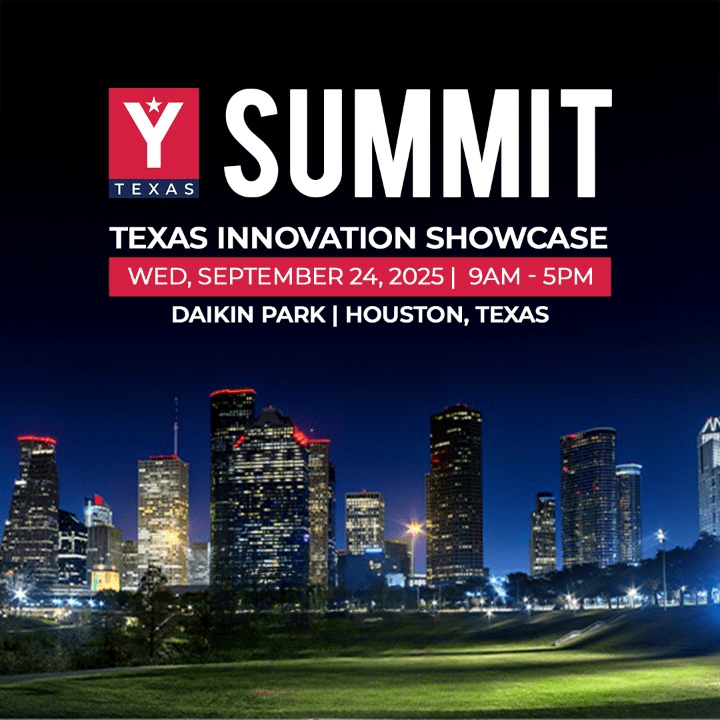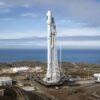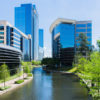News Provided by TexSpace
February 2, 2022
Recently, an article entitled, “Without a Lone Star space plan, Texas will lose its advantage,” made a distressing claim about Texan commercial space prospects. It asserted that, while Texas is home to NASA’s Johnson Space Center, an impressive supporting infrastructure of launch, production and testing facilities, and a wide array of space technology companies, it is losing ground to states like Florida, Colorado, and Alabama, who are attracting the next generation of space innovators with solid programs of unified state, local and congressional support, robust incentive and financing programs, and healthy talent pipelines.
The article suggests that if we don’t act now to Align, Attract & Educate, there is a real possibility that Texas will not play a pivotal role in the future of the space industry.
We at TexSpace couldn’t agree more and would love to take the next step towards what they described as a “Texas-sized leap forward,” by first applying their recipe to our very own “Space City” – Houston.
Align
The question of alignment is not only national – where Texas lags in competing with other states, but also an international imperative that has grown in importance globally, as the world recognizes the power of the space economy to shape humanity’s future.
Space has a unique fusion of civil, commercial, and national security needs that allows us to leverage private investment to accelerate innovation across all three and risks global commerce in the absence of a safe and secure domain. For that very reason, the security of the space domain is rapidly becoming a focus of militaries worldwide, leading to the establishment of purpose-built, space-focused military branches.
The Texas space industry and government have taken note of these global trends, but need to unify this broad interest and support in order to reach its world-class potential. Following the example of the National Space Council, we need to create a similar “Texas Space Council” or “Texas Commission on Space” under the Governor’s leadership to solidify a unified vision, empower central leadership towards that vision, and in doing so enable significant growth.
Attract
When you compare the available resources of Texas to other areas – it almost seems unfair. We have world-class infrastructure and unmatched logistics access. We have supporting industries throughout the state, unrivaled civil space presence, burgeoning commercial space presence, three active spaceports, and the 10th largest economy in the world by GDP. Yet our lack of a single, unified effort diminishes what should be a dominant Texas juggernaut, into a loose connection of local incentives and environments that can’t effectively compete with the more cohesive efforts of our competitors.
Once aligned under a common vision, we need to pool resources and unify support at a state level so that Texas can strategically engage and attract critical parts of the space economy. The first step is to honestly compare Texas to what other locations are offering so that we can compete and win: business-friendly tax and financing incentives, enticing grant opportunities, access to capital, available real estate, and other special programs.
Second, we must realize that Texas is much more than a single city, but rather an interconnected web of resources and talent centers statewide that create fertile grounds for growth. Houston’s Spaceport is a prime example of an intentional, aerospace-focused business park that creates the necessary density of talent, resources, and infrastructure to effectively forge centers of gravity for space industry specialties. In Houston’s case, that of space hardware development and test.
Economic development organizations are also key in creating enticing environments by streamlining state and local processes, providing companies with relocation, mentoring, and networking services, and leading efforts to secure an expanded customer base.
For example, expanding the Houston customer base to include national security space by recruiting military and federal entities, who alongside civil and commercial space can infuse capital, develop infrastructure, and provide a more solid and broad foundation upon which Texas can attract the businesses and workforce that will drive our future.
Educate
With a record influx of private capital, the space industry is growing rapidly, and the demand for a trained workforce is growing just as fast. To meet this insatiable appetite for talent, Texas universities have strong aerospace internship and enrichment programs, as well as expanded advanced degrees and research opportunities. The industry has also done its part through mentorship programs and personnel exchanges that allow cross-pollination of experience, ideas, and excitement at every aerospace level from industry giant to start-up. While these programs are crucial, we also need a broader look at the underlying space industrial base – and what powers it.
A recent report[1] on the U.S. space industrial base echoed similar messages on strategic direction (align), leveraging commercial investment and innovation through meaningful contract opportunities (attract), and developing the workforce while shoring up fragile domestic supply lines (educate). It is important to remember that a strong base requires effort across the entire development lifecycle, not just assembling parts and systems from overseas. To do so requires a more holistic educational approach that includes technician and certification programs focused on hardware development, production, and testing skills, to include composites, avionics, robotics, welding, and more.
San Jacinto College’s EDGE Center Aerospace Program is a prime example of this holistic approach. It is supporting local Houston companies like Intuitive Machines with skilled technicians to assemble their lunar landers, while building a solid foundation of talent and experience to support the nation as a whole.
Align – Attract – Educate, the recipe for Texan space success. To truly reach our potential, we must Align under a common vision, Attract the best and brightest space innovators, and Educate across the spectrum to build the pipeline of talent we need.
Houston’s place in the history of human spaceflight may never be in question, but history is not enough. Texans are born of true grit, walking with a John Wayne-style swagger towards the future, not looking behind us to relive glories of the past. Now is the time for Houston to take that next step in securing our “Space City” moniker for the future.
[1] State of the Space Industrial Base 2021: Infrastructure & Services for Economic Growth & National Security. J.Olson, S. Butow, E. Felt, T. Cooley, & J.Mozer, Edited by Peter Garretson, November 2021.
TEXSPACE EVENT: LASSO THE MOON
TexSpace is a Houston-based non-profit dedicated to providing tools and curating resources to reduce entry barriers and promote space innovation in Texas. We hope you’ll join us on February 28thfor “Lasso the Moon,” hosted by the United States Space Force Association and sponsored by Jacobs Engineering. As part of the annual Houston Tech Rodeo innovation conference, this will be a unique opportunity to meet with academia, industry leaders, and policymakers, representing civil, commercial, and military space. Find out more at https://sfaevents.org or https://texspace.org








